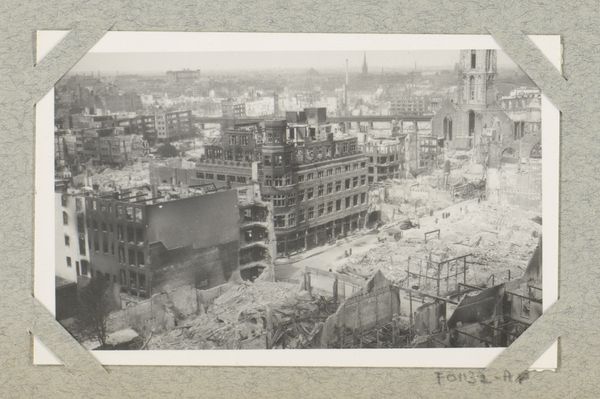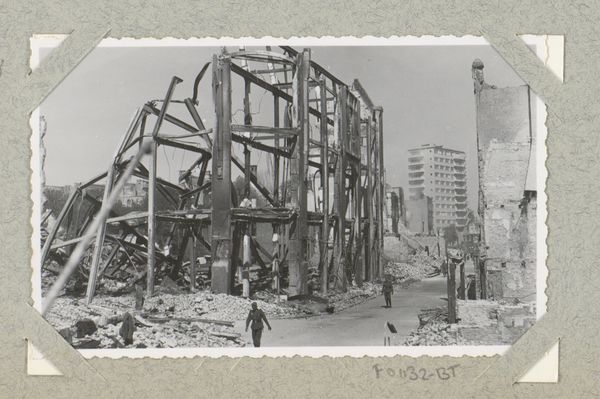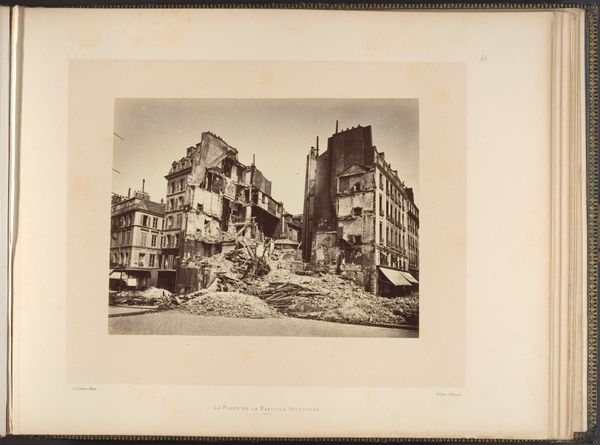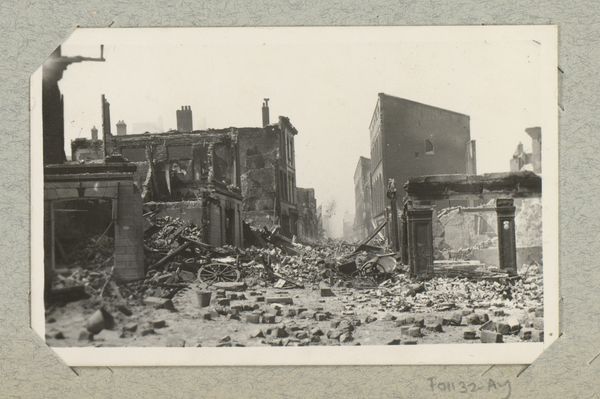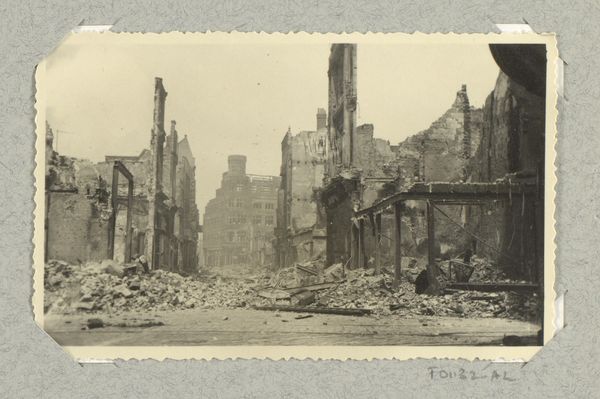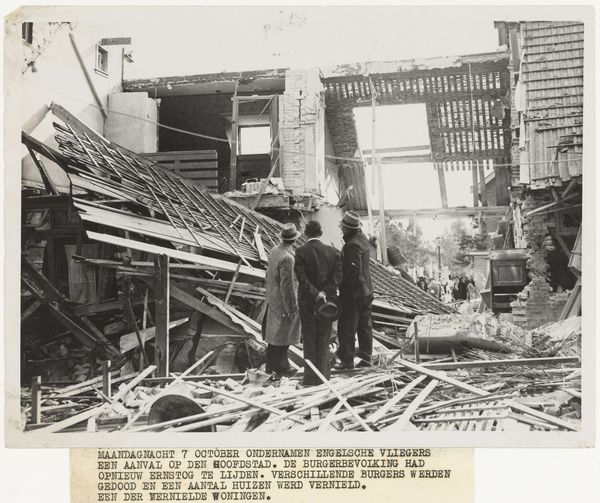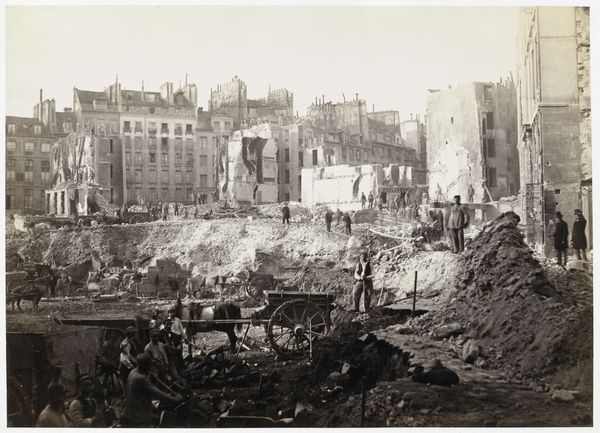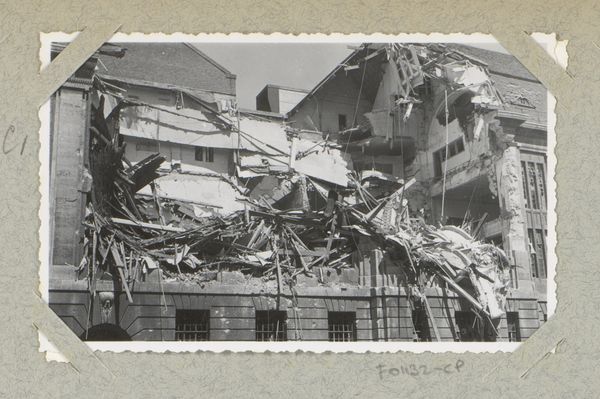
Gebombardeerde westgevel van Magazijn de Bijenkorf aan de Schiedamse Vest, Rotterdam 1940s
0:00
0:00
photography, gelatin-silver-print
#
landscape
#
street-photography
#
photography
#
gelatin-silver-print
#
cityscape
#
realism
Dimensions: height 4.5 cm, width 6 cm
Copyright: Rijks Museum: Open Domain
Curator: Looking at this photograph, it’s hard not to be struck by its starkness. This gelatin silver print, taken sometime in the 1940s by an anonymous photographer, depicts the "Gebombardeerde westgevel van Magazijn de Bijenkorf aan de Schiedamse Vest, Rotterdam"—the bombed west facade of the Bijenkorf department store in Rotterdam. Editor: My first thought? Gut-wrenching. It's more than just a building destroyed. It’s the skeletal remains of commerce, of ordinary life, laid bare. I feel a heavy stillness. Curator: Yes, a stillness that speaks volumes about trauma. The Bijenkorf, even in its ruined state, stands as a powerful symbol. Department stores have always represented prosperity, modernity. Seeing it like this speaks to the utter devastation inflicted upon Rotterdam during the war. We see the potential obliteration of such symbols of continuity, success, modernity, comfort and beauty. Editor: Absolutely. And beyond the obvious destruction, I see this incredible tension between what’s broken and what still stands. Notice how the relatively intact building in the background looms? It's a silent witness. This juxtaposition adds a whole layer of meaning—the past versus a suddenly very uncertain future. This composition carries a kind of symbolism, that perhaps Rotterdam continues to exist despite destruction. Curator: Indeed, that tension is key. Also, think about the lone figure in the foreground. Their presence, small against such monumental devastation, adds to that psychological drama, conveying a very powerful image of desolation. This work is not merely a photograph of ruins; it is an exploration of psychological disruption, alienation, and an enduring question. Editor: They also inject an eerie sense of scale, highlighting the absolute magnitude of ruin while acting as a solitary sentinel, and conveying that feeling that it might be easier to look away than to really face it. I also notice how the street, still delineated, acts as a bizarre invitation to continue into the abyss, in spite of this visual devastation, almost daring us. I can’t shake this sense of pervasive dread in looking at it. Curator: Perhaps it serves as a memento mori for cities. These destroyed buildings become potent symbols of fragility. Looking closely at this print also feels a bit like gazing at mortality. A stark and essential piece of documentary evidence that asks far more questions than it answers. Editor: For sure. An essential photo and a testament to not forgetting what humankind is capable of both creating and obliterating. It also leaves me hoping. Hoping we don't forget that in remembering, and choosing creative resilience, we also still have the capacity for healing.
Comments
No comments
Be the first to comment and join the conversation on the ultimate creative platform.
